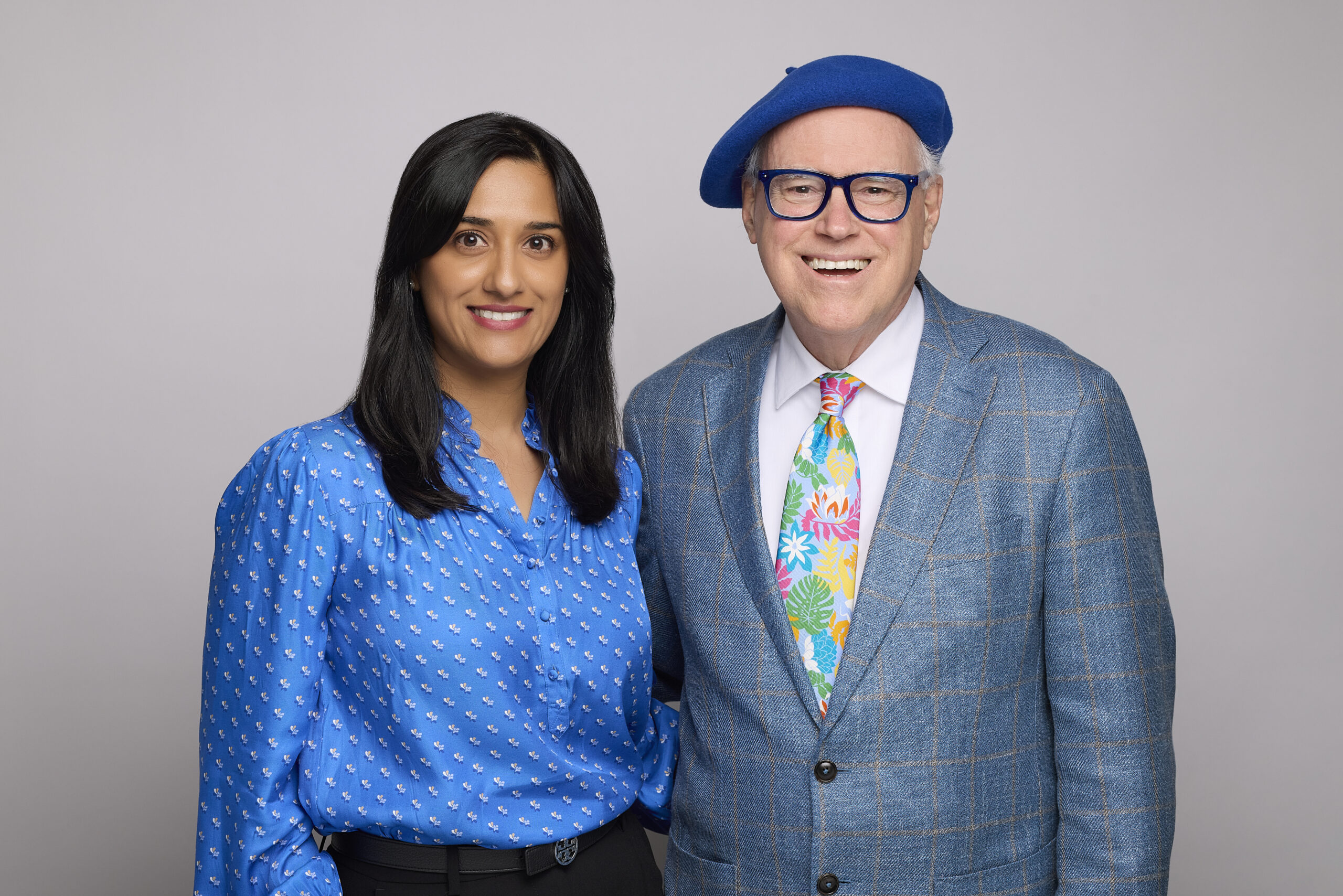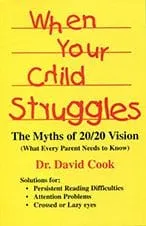Vision Therapy for BVD
Headaches, dizziness from screens? Undiagnosed BVD—eye misalignment—might be why. Atlanta’s Cook Vision Therapy offers proven solutions: vision therapy and prism lenses for lasting relief.
Vision Challenges and Treatment Options for Binocular Vision Dysfunction (BVD)
Whether using a mobile device or desktop, we are almost constantly engaged with screens. For many, this leads to discomfort due to undiagnosed vision problems like Binocular Vision Dysfunction (BVD).
BVD happens when the eyes are slightly misaligned, causing the brain to struggle to fuse images from both eyes into one clear picture.
BVD can affect both children and adults, leading to debilitating symptoms such as headaches, blurred vision, and dizziness.
At Cook Vision Therapy, we diagnose and treat BVD through customized treatment plans that maximize vision and alleviate the symptoms associated with this condition. We treat patients in the Atlanta area, focusing on holistic solutions rather than symptom management. If your eyes are feeling off after too much screen time or if you’ve been dealing with constant discomfort, BVD might be the underlying cause.
What Is Binocular Vision Dysfunction (BVD)?
Binocular Vision Dysfunction (BVD) occurs when the eyes are slightly misaligned, causing them to work harder to focus on a single image. This misalignment leads to eye muscle strain as the brain attempts to correct the images seen by each eye. As a result, those suffering from BVD may experience a wide range of symptoms like
-
Double vision
-
Headaches
-
Dizziness or vertigo
-
Blurred vision
-
Eye muscle strain
-
Motion sickness
-
Difficulty reading or tracking objects
-
Poor depth perception
-
Light sensitivity
-
Anxiety in crowded spaces
BVD is often misdiagnosed because its symptoms are similar to other vision or neurological disorders. Diagnosing BVD with a specialist is critical for effective treatment.
These symptoms often overlap with other medical or neurological conditions, contributing to frequent misdiagnosis. For example, BVD can be mistaken for migraines, ADHD, dyslexia, or vestibular disorders.
What is the difference between vision therapy and standard eyeglasses?
Standard eyeglasses correct refractive errors such as nearsightedness or farsightedness. Vision therapy, on the other hand, retrains the eyes and brain to work together, addressing the underlying causes of BVD
Diagnosing Binocular Vision Dysfunction
Diagnosing BVD starts with a thorough eye exam by a vision therapy specialist. Many patients have seen multiple eye doctors without relief because BVD is often missed without targeted testing.
To accurately diagnose BVD, we conduct detailed tests, assessing how well your eyes work together. They will evaluate if the images from your two eyes reach the brain correctly and if your brain is struggling to process these images, causing BVD symptoms. The doctor may discover that your eyes have difficulty maintaining proper alignment, which is the root cause of the symptoms.
Once BVD is diagnosed, treatment often involves vision therapy. Vision therapy is a program designed to correct eye misalignment and help your brain process visual information more effectively. This non-invasive treatment focuses on exercises that retrain your eye muscles and brain to work together, reducing the discomfort caused by BVD.
Why is Binocular Vision Dysfunction (BVD) Frequently Misdiagnosed
Binocular Vision Dysfunction (BVD) is often misdiagnosed because its symptoms—such as headaches, dizziness, double vision, and reading difficulties—closely mimic those of other neurological and vision disorders like migraines, vertigo, or convergence insufficiency. Standard eye exams typically focus on visual acuity and may miss subtle eye misalignments critical to identifying BVD. Consequently, many patients consult multiple optometrists or neurologists without receiving an accurate BVD diagnosis, delaying essential treatment.
The Importance of Specialized BVD Diagnosis
A precise evaluation by a vision therapy specialist is vital for detecting BVD. Key components of a specialized assessment include:
-
Comprehensive Binocular Vision Exams: Target eye teaming and focusing to uncover misalignments.
-
Functional Vision Assessments: Evaluate how well the eyes coordinate during daily tasks like reading.
-
Neurovisual Evaluations: Use advanced tools to measure (subtle eye misalignments) impacting depth perception and balance.
Early diagnosis of BVD is crucial for effective management. Without it, symptoms can worsen, leading to chronic discomfort. If you suspect BVD, seek a neuro-optometrist or vision therapy specialist for tailored testing and explore vision therapy or prism lenses for relief. Prompt, accurate care improves outcomes and enhances quality of life.
Treatment Options for BVD
At Cook Vision Therapy, we create customized treatment options to lessen symptoms and improve quality of life. Depending on the severity of your BVD, we may recommend one or a combination of the following treatment options:
Vision Therapy: A program to improve eye coordination and reduce strain by training your eyes to work together, relieving BVD symptoms.
Prism Lenses: These lenses correct misalignment by adjusting how light enters your eyes, helping your brain perceive proper alignment. Many patients experience reduced symptoms or full relief.
Micro-prism Lenses: A more precise option for severe misalignment, offering better correction and relief from dizziness and headaches.
Customized Treatment Plans: We combine vision therapy and prism lenses for a tailored approach, helping you focus better and eliminate BVD symptoms effectively.
Using Prism Lenses to Treat BVD
Prism lenses trick the brain into thinking that your eyes are properly aligned. They adjust how light enters your eyes, correcting the misalignment before the images from your two eyes reach the brain. For many, this correction leads to an immediate reduction in symptoms such as dizziness, blurred vision, and headaches. Patients often experience a gradual improvement in their symptoms over time, leading to a better quality of life.
In some cases, prism lenses are incorporated into a long-term treatment plan that includes regular vision therapy exercises, ensuring the most comprehensive approach to correcting BVD.

The Benefits of Treating Binocular Vision Dysfunction
Early treatment of BVD helps prevent worsening symptoms. Prism lenses, vision therapy, and regular check-ins with an eye care specialist can eliminate BVD symptoms and restore your vision.
Many patients experience relief and return to daily activities without discomfort. The goal is to improve your vision and quality of life, whether at work or in everyday tasks.
Cook Vision Therapy: Treatment for BVD
If you’ve experienced symptoms like headaches, dizziness, or blurry vision, it could be BVD. At Cook Vision Therapy in Marietta, GA, our specialists are trained in diagnosing and treating binocular visual dysfunction. We offer a range of treatment options to help you effectively maximize your vision and eliminate the symptoms of BVD.
Book your eye exam today and take the first step towards clearer, more comfortable vision.
Micro-Prism Lenses for Severe BVD Cases
Micro-prism lenses provide advanced precision to correct significant eye misalignments for patients with severe binocular vision dysfunction (BVD). Unlike standard lenses, these specialized tools refine how light enters the eyes, reducing double vision, headaches, and balance issues. Often paired with vision therapy, micro-prism lenses are a cornerstone of long-term BVD management, offering dramatic symptom relief and improving daily function.
Customized BVD Treatment Plans
Effective BVD care requires personalized treatment strategies tailored to symptom severity. A neuro-optometrist or vision therapy specialist typically combines:
-
Micro-prism lenses: Adjust to evolving misalignments for sustained comfort.
-
Vision therapy exercises: Strengthen eye coordination and depth perception.
-
Progress-based adjustments: Optimize treatment as patients improve.
This adaptive approach aims to restore pain-free vision, boost productivity, and rebuild confidence in activities like driving or screen use.
Benefits of Early & Comprehensive BVD Treatment
Early intervention for BVD prevents symptom escalation and lowers the risk of chronic issues like visual fatigue or anxiety. Patients who start targeted BVD treatment often report:
-
Rapid symptom relief: Less dizziness, eye strain, and light sensitivity.
-
Sharper depth perception: Improved navigation and spatial judgment.
-
Reduced medication dependence: Addresses root causes vs. masking symptoms.
-
Enhanced academic/work performance: Better focus and task endurance.
-
Greater social ease: Reduced discomfort in busy environments.
Common Questions
-
What happens if BVD goes untreated?
Untreated BVD can lead to worsening symptoms such as chronic headaches, dizziness, blurred vision, and difficulties with focus. Over time, these issues may interfere with daily tasks, causing significant discomfort and impairing quality of life.
-
What worsens BVD?
-
Is BVD a neurological disorder?
-
What triggers BVD?
-
Does BVD ever go away?
-
Are prism lenses a permanent solution?

-
What are the symptoms of BVD?
-
What is binocular vision dysfunction (BVD)?
-
How is BVD diagnosed?
-
Can adults get BVD treatment, or is it only for children?
-
Why choose Cook Vision Therapy for BVD treatment?
-
How do prism lenses work for BVD?
-
Will vision therapy cure BVD permanently?
-
What causes Binocular Vision Dysfunction?
-
How is BVD diagnosed?
-
Are there home exercises for BVD?
-
Does insurance cover vision therapy for BVD?
-
What happens if BVD is left untreated?
Check Out Our Resources
Dr. Cook’s Publications:
- Authored books VISUAL FITNESS and WHEN YOUR CHILD STRUGGLES.
- Published articles in top optometric journals.
- His article “Eyesight, infinity and the human heart” was voted “Best Non-Technical Article” by the Association of Optometric Editors.



